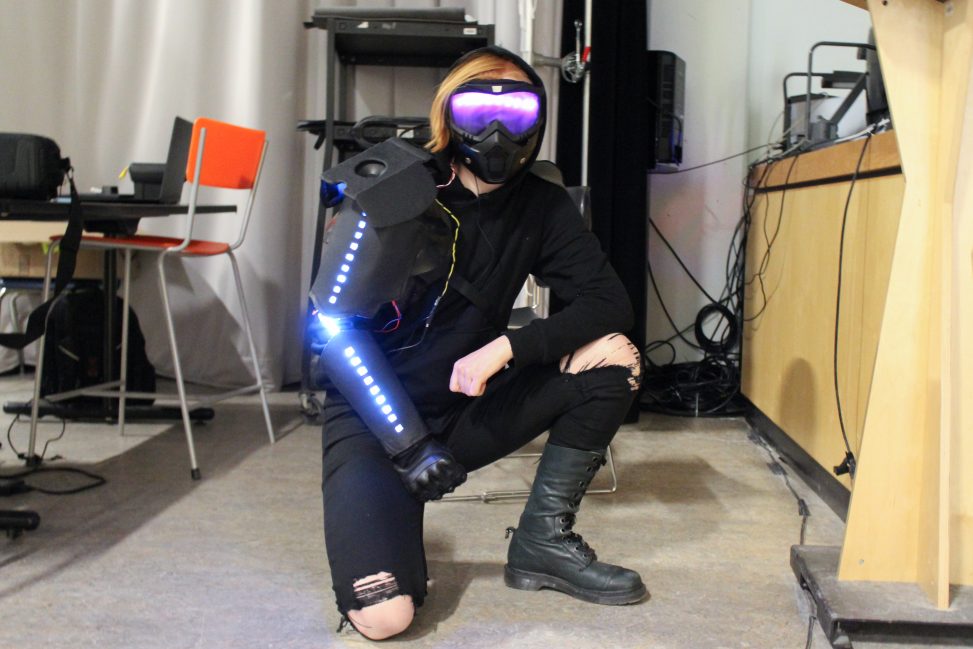[DISTORTION] is a wearable physical computing work, and includes a mask, shoulder armour and gauntlet. [DISTORTION] uses biosensing, light displays, and voice modulation to mask the user’s face and voice, but simultaneously reveals intimate details of the user’s being by displaying their pulse and physical connections. By design, certain elements of communication are complicated and made extremely difficult. The mask renders the user’s vision almost useless, and the voice modulation prevents the user from speaking clearly. However, [DISTORTION] brings out other features of a user’s state which are impossible to see in normal, corporeal interactions without technology. Light displays in the arm create bright flashes in response to the user’s physical touch and grip using the gauntlet. In this way, what the user is currently occupied with is broadcasted, even if they try to hide it. Lights in the mask blink to the rhythm of the user’s pulse. A person’s pulse can be considered as something personal: it can disclose information on their physical, mental, and emotional wellbeing. In certain situations, it may be information that some will want to keep private.
[DISTORTION] acts as a corporeal, tangible expression of the way communication is altered through digital means. While it does not represent a one to one metaphor, it aims to bring to light the contradictions that digitally augmented interaction creates. It is widely accepted that digital communication (for example, social media or text messaging) does not honestly portray people as they are in real life. Yet the same systems that fragment our interactions can also bring out our authentic inner thoughts. We can observe that many people feel more comfortable disclosing personal thoughts, ideas or details when operating with the anonymity that digital tools provide. Viewed through this juxtaposition, our ideas on what makes up truly ‘human’ communication are challenged. [DISTORTION] is a question about the interpersonal environment technology has created, and whether its role has been to diminish or to further ‘real’ communication.
Alexis Wspanialy & Kathryn Bower



